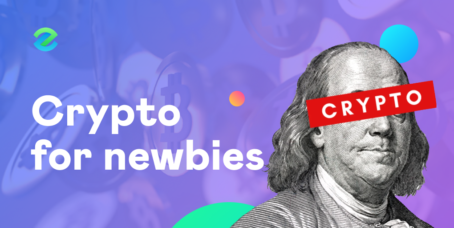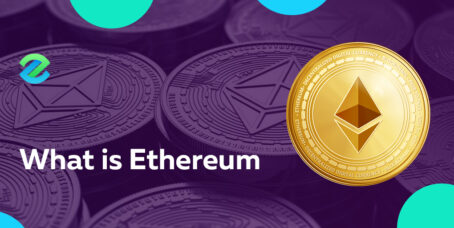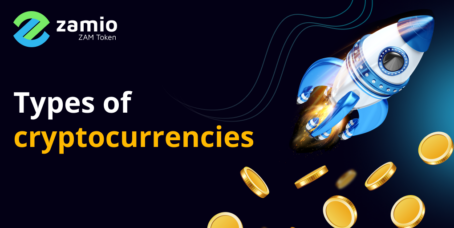In the emerging and booming era of digital currencies powered by blockchain technology, the terminologies associated with such assets can be classified differently depending on the source of authority, creating some confusion for beginners. This article will clarify this confusion by explaining the difference between cryptoassets, cryptocurrencies, coins, and tokens and their underlying divisions. It is first essential to understand the history of bitcoin as a cryptocurrency.
Table of Contents
Bitcoin the first cryptocurrency
As the technology of blockchain advances and matures, new terms are adopted, and old ones may be replaced or discarded. The most widely used word in the crypto world is cryptocurrencies. The term cryptocurrency has been used since 2009 to describe bitcoin, the first decentralized digital currency in the world.
Satoshi Nakamoto created the Bitcoin project to solely function as a digital cash system capable of recording, storing, and transferring value from point A to point B with ease, speed, and low transaction cost. This newly found digital currency relies on cryptography or cryptographic proof, and hence the name cryptocurrency.
Since bitcoin creation, a countless number of cryptocurrency projects have emerged. Some of these projects are copycats of Bitcoin, such as Bitcoin Gold, Bitcoin Cash, and Litecoin. But they may have come to existence to solve existing problems in Bitcoin. So they may have better performance in terms of transaction speed and cost. However, their primary and only function is to record, store and transfer transactions like Bitcoin on their own blockchain and network. Hence, we call these cryptocurrencies, including bitcoin coins.
Yet other projects have emerged to provide different and multiple functionalities other than transferring value. An example of this is the Etheruem project created to help developers build decentralized applications (Dapps) on the Ethereum blockchain using smart contracts. Any application built on top of the Ethereum blockchain or any other existing one can only issue tokens, not coins.
The Etheruem project has its own blockchain and native currency, the Ether. Although Ether operates on its own blockchain and can transfer value like bitcoin, it is still called a token. The primary function of Ether is to collect fees from users and developers for using the Etheruem infrastructure to build Dapps, not to function as a digital payment system like bitcoin and other similar projects.
Another example is Binance Smart Chain with its native currency, the BNB. Binance is created to primary function as a centralized exchange for the crypto market, not to transfer value, although it can. Hence, the BNB is a token. All tokens like coins can transfer value to pay for goods and services or settle payments. However, they primarily existed to service a different purpose.
Cryptoassets Vs. Cryptocurrencies
What you need to understand is that the term cryptocurrency is somewhat outdated. At this point, it is not a reflective and inclusive term. It only accurately describes projects that function solely as a digital cash system, such as Bitcoin and its copycats. With the emergence of thousands of cryptocurrencies with different functionalities, we need another inclusive word to represent them. Therefore, the term cryptoassets, first echoed by Chris Burnisk, is more suitable to describe all cryptocurrencies. Cryptocurrencies are broadly classified as cryptoassets and further divided into coins and tokens.
Tokens Vs. Coins
Cryptoassets are mainly divided into coins and tokens. A coin has only one function, which is to record, store or transfer value. A coin also operates on its independent blockchain and network. Examples include Bitcoin (BTC), Ripple (XRP), Litecoin (LTC), and Dogecoin (DOGE).
On the other hand, a token is multifunctional. It can transfer value just like a coin does, but it is not the prime function. In addition, tokens are usually, but necessary, issued on an existing blockchain and network belonging to a different platform or project. Needless to say, some tokens are issued and stored on their own blockchain and transacted on their own network.
To conclude, a coin must meet two criteria:
- Created to transfer value only
- Operates on its own blockchain and network
If a coin doesn’t meet these two criteria, then it is a token.
Tokens are divided into utility tokens, security tokens, non-fungible tokens, and governance tokens, and more types are emerging.
Altcoins Vs. Shitcoin
Altcoins is a broad term used to describe all cryptoassets that emerged after bitcoin. They are the bitcoin alternatives, hence the word Alt, which stands for Alternative.
Shitcoins are those coins that have neither clear purpose nor inherent value for their existence. In other words, they are the bad apples that make the rest of Altcoins look bad.









